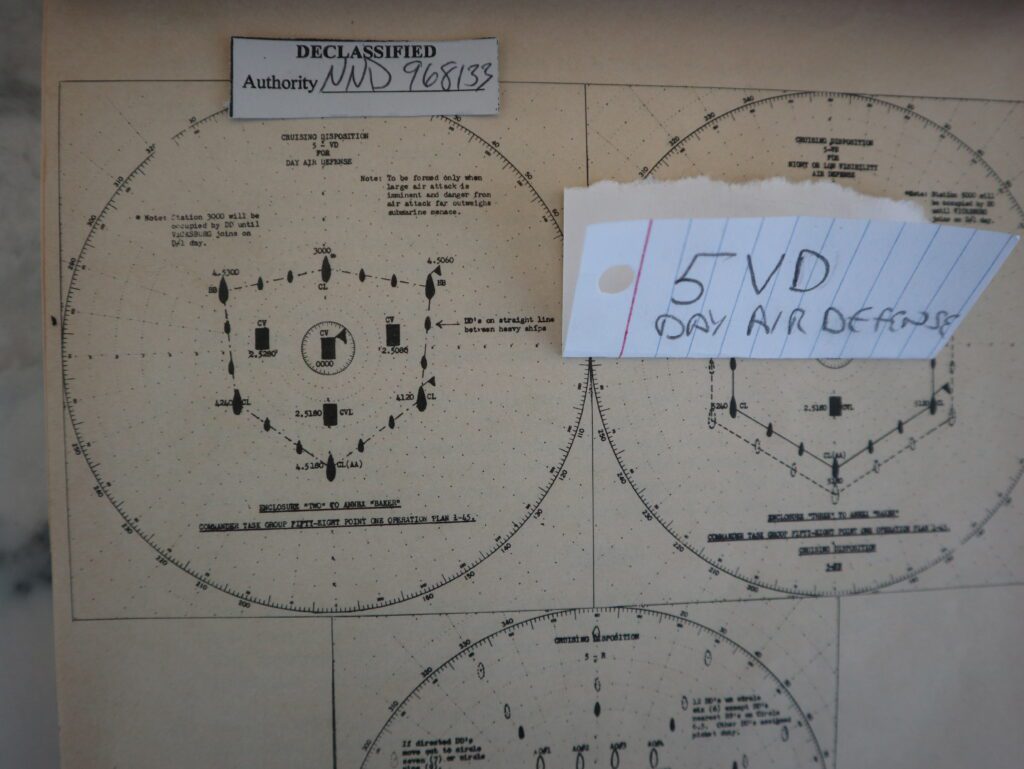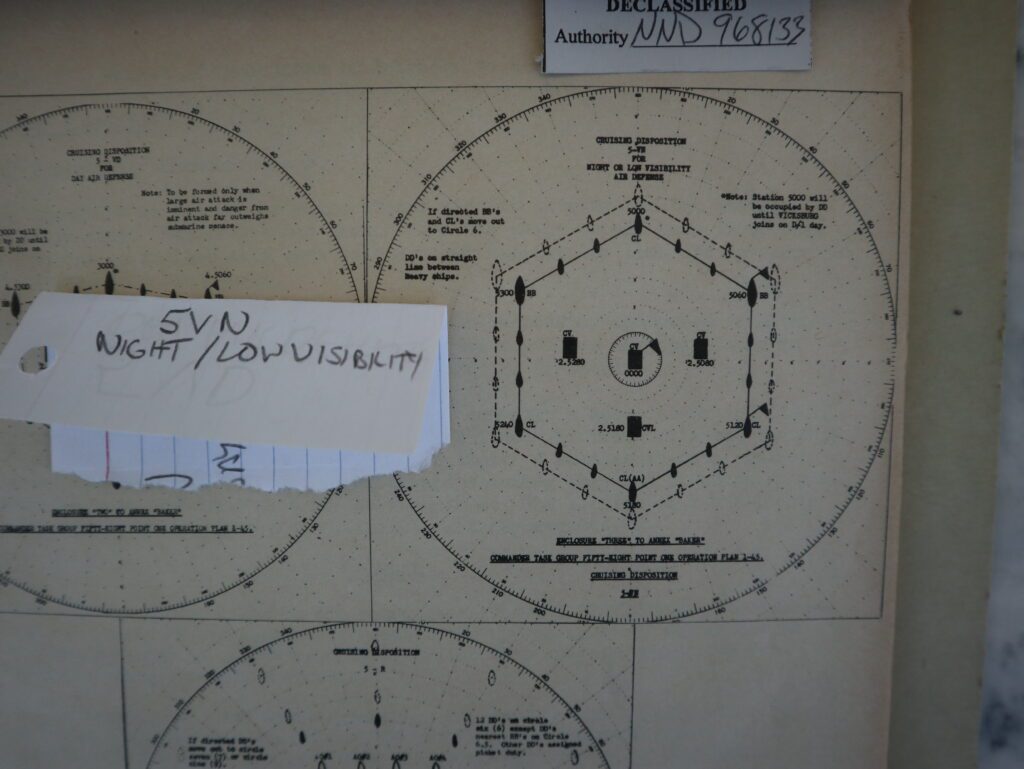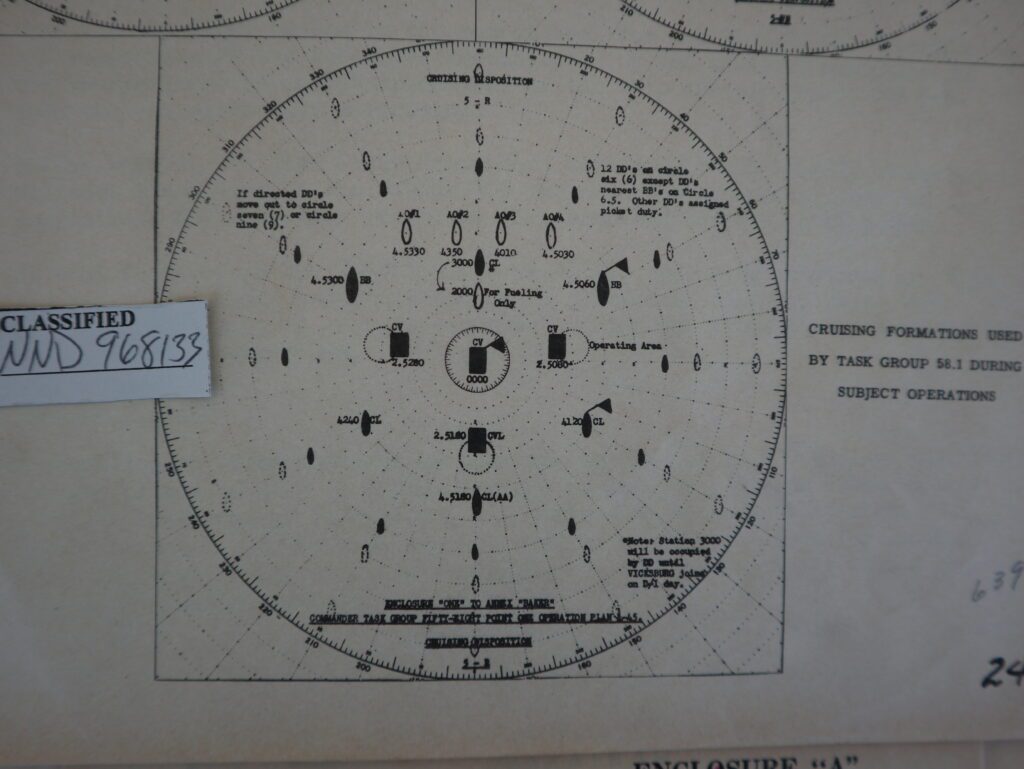US Navy Task Force 58 Ship Formations
Readers familiar with the US Pacific Fleet in World War II know that the US carriers would sail into harm’s way surrounded by battleships, cruisers, and destroyers. These escorts were there to protect against anti-aircraft, surface, and submarine attacks. I knew enough about the US Navy to know that there had to be set formations. But the authors I read would write, “The carriers were at the center of a circle of battleships and cruisers. Further out would be another circle of destroyers.”
Then, while researching my book about USS Franklin, I ran across a report in the National Archives. Titled Action Report 10 February to 4 March 1945, it was from Admiral J.J. “Jocko” Clark. He commanded Task Group 58.1, one of four task groups in Task Force 58.
The report gave prominent attention to the formations used to provide maximum protection against air and submarine attacks. It also included diagrams, shown below.
Admiral Clark’s report discussed three different formations. (These are not zigzagging plans.)
5-VD

Task Force 58 formed Formation 5-VD during the daytime. It was used when the probability of air attack was high and attack by submarine was low. The flagship of the task group is in the center. Fleet carriers are denoted by CV and light carriers by CVL. Surrounding them were battleships (BB) light cruisers (CL), heavy cruisers (CA), and destroyers (DD). (USS Franklin was in 5-VD when she was attacked on 19 March 1945.)
5-VN

At night or in times of low visibility Formation 5-VN was used. It provided the best protection when the probability of air attack was high and submarine attack low.
5-R

Task Force 58 used Formation 5-R for normal cruising. DDs sailed in “Circle Six,” six thousand yards from the flagship, or in Circle Nine, nine thousand yards from the flagship. Circle Six was better for formation maneuvering, but Circle Nine, according to the report, provided better anti-submarine protection. (Additional DDs performed“picket duty,” to provide early warning of attacks.)
I am still learning about the overall tactics of Task Force 58. I found these diagrams and explanations helpful in gaining more understanding of the tactics used by the Task Force 38/58 commanders, Admiral Marc Mitscher and Admiral John S. McCain.
If you have any knowledge of fast carrier strategies and tactics used in the Pacific Theater of Operations (PTO), leave a comment below. I’d love to talk with you about them.
Did you arrive here via a search engine? I am the author of the forthcoming book, Heroes By The Hundreds: The Story of the USS Franklin (CV-13). In addition to writing about the bravery of the crews that saved her, I will be writing about the lessons we can learn in leadership and decision-making. I’ll also write about the changes the US Navy made because of those lessons learned.
Feel free to follow me on Facebook. There, I am M. Glenn Ross, Author. I also send out a monthly newsletter, Glenn’s After-Action Report, writing about subjects I find interesting in my research. You can sign up for it below. Feel free to leave a comment or ask a question. Thanks for reading.-Glenn